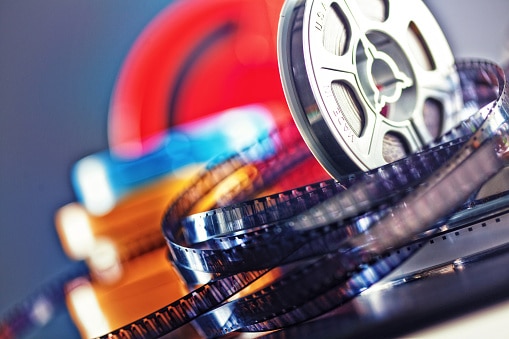The digital revolution was the move from physical media to digital media, the transition from HD to 4K, but what does this mean for the future of film as a medium of acquisition?
Well, at this point, I think we can safely say that although shooting on 35MM or 16MM film may have become specialist, even niche, it will certainly never die out completely, thanks in part to certain stalwart Hollywood directors like Quentin Tarantino who refuse to shoot digitally.
What digital acquisition of video content has done, is that it has reduced the costs of acquiring footage and essentially democratized the film-making process. Movies can be shot and produced for a fraction of the cost that they were on celluloid. Making a feature film is now accessible to everyone.
READ MORE | Worldwide Box Office, The Best It’s Ever Been
The main issue, however, with digital masters and acquisition, is how we archive and are those archives tried and tested? In a word, no, and herein lies the reason that 35MM and 16MM and film in general will never die out completely.
Loading...
When we take a look at archiving in general – when high definition revolutionized television content acquisition way back in 2000 and 2001 and DVD became the norm for home video viewers – we all thought that this was the pinnacle of new technology, the picture clarity, the sound, the colors; could this ever be improved upon? It was improved upon in less than five years with the advent of 4K content acquisition.
Take a trip down memory lane and look at some of those early features and TV series shot in high definition (1080p), films like Session 9 and Star Wars – Attack of the Clones – do their visuals hold up to today’s standards? No, they don’t. With 4K and even 8K content acquisition, HD seems positively antiquated and certainly looks that way when viewing these films.
This is where film still trumps these formats as a basic storage format. Movies shot on 35MM or even 16MM stock is a physical frame size. Now this individual frame can be scanned and blown up to any size you want it as, there is no limit in terms of mastering and remastering because it’s a physical medium.
This is the actual frame of film, it exists, it’s organic, you can touch it, as opposed to modern digital acquisition which is merely terabytes of digital ones and zeros – it exists only on hard-drives.
Let me give you an example of bad digital archiving. There’s a whole generation of digital photographs between 2000 and 2010 that have almost simply ceased to exist whether it be attributed to a hard-drive crash – a software upgrade or a computer crash. How are these modern movies going to be archived and stored? Will one be able to revisit one of them, like a film print in over a hundred years’ time and it’s still there, still plays and still exists.
Gone with the Wind and Wizard of Oz, both shot in 1938 and released in 1939 have been remastered in 4K and they look like they were shot yesterday. In another five years, they can still access these prints, digitally scan them again and size them up to 8K if necessary. These films are now 80 years old – will you be able to access a digital feature in the same way?
The truth is that only time will tell, but this does make for an interesting debate.
Another example of retrieving amazing archives is the recently-released documentary Apollo 11 through CNN Films. The national archives in the US had recently discovered 65mm and 70mm film reels of the preparation for and the actual moon landing in 1969. Now the frame size of the film, much like the name suggests, 70mm, is huge.
READ MORE | What Drives Sacrifice And Success At The Box-Office
These archive films were then scanned into modern film scanners and painstakingly remastered into the new IMAX digital format. Having recently watched the film, I can attest to the fact that the presentation is truly breath-taking. The details, the colors, the clarity, it truly is a sight to behold. One would never say the footage was shot in 1969.
Which brings me to my final point: Until digital can prove to us all that in a decade’s time, all these ‘digital’ masters can still be accessed and stored and made easily available – it hasn’t proved itself as good an archive as good old-fashioned celluloid. Kodak may be all but dead in terms of acquisition but its legacy lives on forever in the archives and will continue to do so.
– Robert Haynes is the Executive Producer of entertainment at CNBC Africa and the owner of film and TV production company, 42nd Street Films, in Johannesburg.
Loading...
